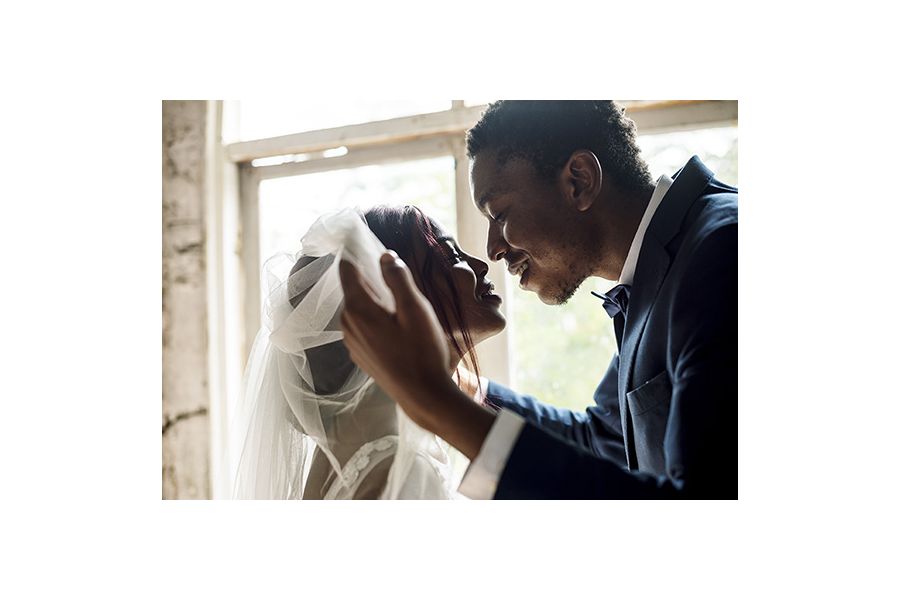Unveiling the bride

When it comes to looking bridal, a lot of focus is on the dress. Will she wear a princess ball gown or body-hugging fit and flare? Will it be covered in lace or beading?
Here’s an insider tip: what really turns someone into a bride is the veil.
“My personal mantra has always been that the veil makes the bride,” says Sara Gabriel, owner and principal designer of Sara Gabriel, a Denver-based bridal accessory company. “The reason for that is you can almost be wearing anything – including jeans and a t-shirt – and, if you put on a wedding veil, you become a bride in that moment. I have seen that happen, literally, thousands of times.”
Since most women have never shopped for a wedding veil, though, you might not know where to start.
First, Gabriel recommends narrowing down your dress choices before selecting a veil. Choosing the veil first, she says, would be like “picking out the flatware and where the houseplants are going” before buying a house.
Once you’ve nailed down the dress, you can turn your attention to the veil itself. Veils come in a wide variety of styles and lengths, from shoulder length with zero adornments to long trains trimmed with satin or covered in lace, crystals or pearls.
With so many options, it’s easy to feel overwhelmed and get lost in all of the tulle. Luckily, just about every veil goes with every dress according to Gabriel.
“It’s actually difficult to find something that doesn’t go,” she says. “That’s kind of what the secret is. Brides do often want to hear: ‘if you’ve got a lace dress, do this. If you’ve got a crepe dress, do that.’ Fortunately, it’s not about that.”
Instead, brides should ask themselves what overall look they want to achieve. Do they want something glamorous or simple? Romantic or modern? Intricate or architectural? Then, choose a veil that helps achieve that effect.
Brides should also take into consideration the setting. For example, if you’re getting married in a cathedral, you want your bridal look to stand up to the ornateness of the venue. So, if you fall in love with a simple sheath gown, a veil with a long train or lace appliques can pump it up.
Hairstyles, too, don’t have as much of an impact on veil choice as brides often think, says Gabriel.
“You can wear veils with your hair all up, hair down, hair to the side, half and half. We even make veils for brides that have very, very short hair,” she says. “As long as at that trial run, the hairstylist knows there’s a veil that’s got to go into hair, she will be able to accommodate that with almost every hairstyle.”
Another factor to consider when veil shopping: budget. Veils can run the gamut when it comes to price. The handmade veils at Gabriel’s namesake brand, for instance, start at $150 and go up to $1,300.
Not sure if you even want to wear a veil? Try one on anyway, according to Gabriel. “The first step is, give it a chance and see. It’s not something you’re going to know from looking at your Instagram influencers […] or Pinterest board. Because a veil is a feeling more than so than it is a fashion piece.”
If a veil is still not your style, never fear, there are plenty of alternative options to achieve that same bridal feeling. One of the most popular is a fascinator (also known as a birdcage veil), which is essentially a mini veil that only covers part of the face for a vintage-style flair.
For a more modern look, Gabriel suggests adding a cape to your bridal ensemble. “They’re basically just veils, but they hang from the shoulders instead of the head,” she says. “The effect on the dress is really similar [to a veil]. It’s a long, gauzy piece of romance floating behind her.”
As a nod to her Colorado locale, Gabriel also offers another fun and funky veil alternative – a tulle infinity scarf.
“It’s almost like a shawl, but made from veiling material,” she says. “So if she’s getting married outside, having the scarf surround her gives the same feeling as a veil.”